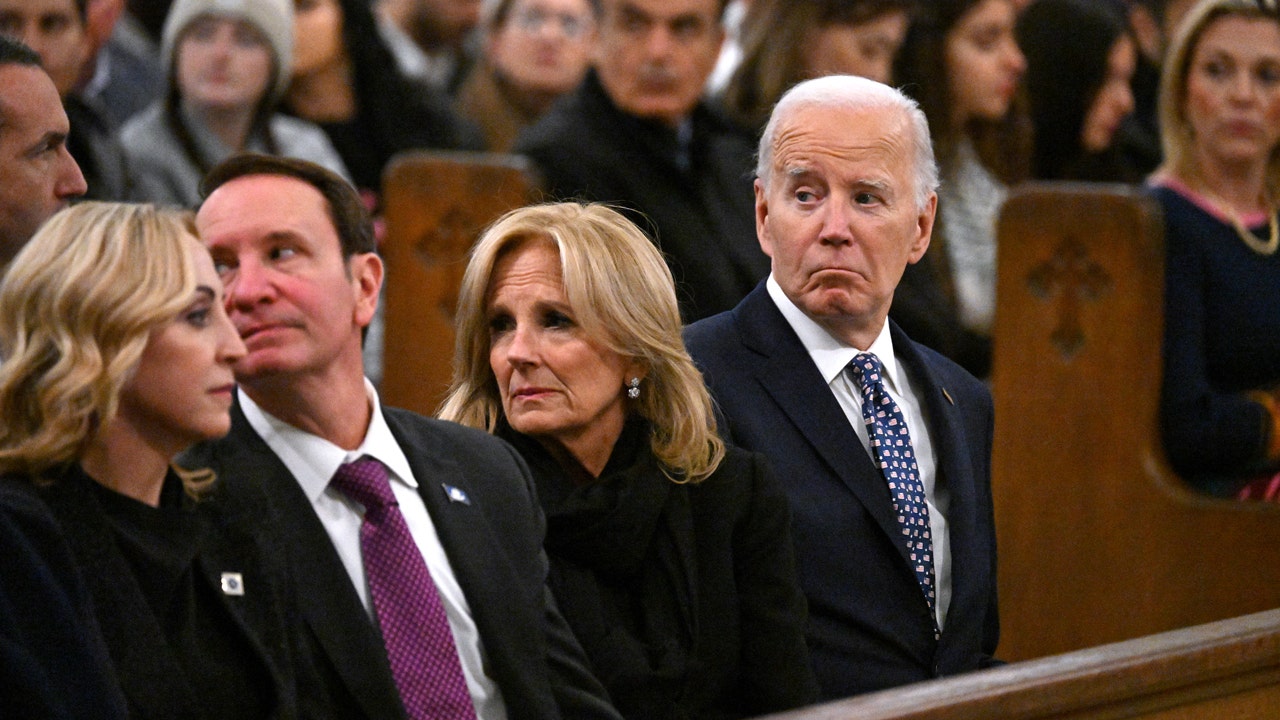New Mexico
Washington State 2024 Opponent Scouting Report: New Mexico

The Cougs will make a late-season swing through Albuquerque.
Who/When/Where: New Mexico will host Washington State on November 16 as both teams will be looking to make a strong push in the closing weeks of the regular season. The Lobos were nothing to write home about in 2023 but with a new (and experienced) coach leading the way, this fall might bring different fortunes. The Cougars should be favored but will need avoid a big letdown on the road.
Offensive Players to Watch: Caleb Medford (WR), Devon Dampier (QB), Entire OL
Defensive Players to Watch: Christian Ellis (S), Kyler Drake (DL), Dimitri Johnson (LB)
The Lobos offense underwent a major overhaul this offseason and a major part of that was the offensive line. All five projected starters for this year are expected to be incoming transfers after essentially all of last year’s bunch left. Tackles McKenzie Agnello (#66) and Baraka Beckett (#56) came in from Texas A&M-Commerce and Campbell respectively. Guards Wallace Unamba (#76) and Richard Pearce (#78) found their way to UNM from FAU and East Carolina while center Juwaun Singletary (#55) is an ex-Tiger of Grambling State.
There’s a lot of questions surrounding that new-look front right now but, by this juncture of the season, everyone should have some familiarity with each other. The Cougars D line might not be able to exploit inexperience from that group in Week 12. If the line is gelling by mid-November and they’re able to protect quarterback Devon Dampier (#4), then the Lobos might have a chance.
Dampier, a sophomore, is pegged to be the starter this year in place of the dual-threat Dylan Hopkins who graduated after last season. Dampier appeared in nine games as a backup last fall, throwing six touchdowns and no interceptions. He will rely on both his legs and arm to make plays for the Lobos. Dampier can zip passes into tight windows with precision but also knows when to call is own number. He rushed for four scores and 328 yards in 2023. If he indeed gets the nod this year, WSU’s defense will have its hands full with containment.
Washington State 2024 Opponent Scouting Report: San Diego State
When Dampier throws, odds are he’ll look to junior pass-catcher Caleb Medford (#12). Medford was tops on the team last year with 551 receiving yards (30 catches) and a pair of touchdowns. He and fellow receiver Ryan Davis (#18) were threats on the outside for New Mexico a season ago and look to be again. Medford is speedy and adjusts to throws will on the run making him a tough cover. Davis, too, is a viable target that has solid hands and nifty footwork. Both will be key assignments for WSU’s DBs.
On the ground, the UNM offense took another big hit with the departure of last year’s star back Jacory Croskey-Merritt. Now it will be Andrew Henry (#2) that gets the rock after running behind Croskey-Merritt. Henry piled up 350 yards and three TDs last year. His mix of great downfield vision and cutback ability makes him difficult to tackle. Henry has shown he’s a viable pass-catching option as well.
When the Cougars are in possession, their primary focus should fall on safety Christian Ellis (#8). Ellis is the playmaker of the secondary, coming in off a sophomore season that saw him knock down four passes and log 59 tackles. His speed allows him to hone in the ball carrier and he covers distance with the best of them. Ellis can get behind the line when asked to on blitzes and go deep downfield stride for stride with receivers as well.
Linebacker Dimitri Johnson (#22) and edge rusher Kyler Drake (#45) will handle business over the middle and up front. Both seniors were key pieces of the UNM defense last year. Johnson was responsible for 48 stops and was a master in turning the ball over, recovering two fumbles and forcing another. He’ll use his hands to punch at the ball when he’s in position to and is great at wrapping up when tackling. Drake, who authored 3.5 sacks and six TFLs last year, is a stonewalling defender, specifically in the run game.
Final Analysis: This is a very winnable road game for the Cougars and with the contest coming as late as it does in the year, depth might be a major issue for a New Mexico group that’ll be trying to find its chemistry this season, especially if injuries are in play. That being said this is not a group that Washington State should take lightly. There’s enough returning experience, especially on defense, for the Lobos that might make them sneaky competitive in a lot of games this fall. If WSU’s defense can get through that revamped line to keep Dampier in check and the offense can avoid a letdown against a defense it should have the upper hand on, you’ve got to like the Cougs’ chances.

New Mexico
Slowed growth: New Mexico drops 21 spots in U-Haul’s latest migration report
New Mexico
New Mexico AG files motion to halt $1.9M buyout for WNMU president

SILVER CITY, N.M. — New Mexico Attorney General Raúl Torrez filed a motion to halt a $1.9 million buyout for the departing president of Western New Mexico University.
Joseph Shepard stepped down as president of WNMU after a state audit found he spent $316,000 of university money on lavish international trips, high-end furniture and other items over the course of several years. During the investigation, the state auditor’s office blamed university management and the WNMU Board of Regents for not upholding their responsibilities and enforcing travel rules.
After this, the board approved a $1,909,788 buyout last month for Shepard.
AG Torrez argues the payment isn’t supported by Shepard’s contract and “is unconscionable as a violation of public policy and the public interest.”
“This payment is an egregious misuse of public funds and a betrayal of the Board’s responsibility to act in the best interest of the university and its students,” Torrez said in a statement Monday. “Dr. Shepard voluntarily resigned, and the Board had ample opportunity to negotiate a reasonable or no-cost separation agreement. Instead, they chose to pledge nearly $2 million in taxpayer money without justification or consideration of the public good.”
The New Mexico Department of Justice is requesting the court temporarily block the $1.9 million payment before a hearing can happen. The NMDOJ is requesting the hearing be held before Jan. 15 – the deadline for the payment – or issue an ex-parte order until the hearing can be scheduled. They are also requesting the court prohibit the board from disbursing the payment until a special audit – requested by WNMU, the regents and Shepard – is complete and a report is available.
Shepard’s buyout is just one part of the board-approved separation agreement. The agreement also calls for Shepard to get $200,000 guaranteed for five years as a newly-tenured faculty member once he returns from an eight-month sabbatical. The sabbatical would begin the day he officially resigns. Then, when he returns, he will work remotely.
The agreement drew ire from Gov. Michelle Lujan Grisham, who sent a letter demanding the entire board step down. Before siding with the WNMU Faculty Senate in a unanimous vote of no confidence in the board, faculty senate president Phillip Schoenberg said he heard from the board president that the regents would comply with the governor’s order.
The faculty senate also called on the regents to rescind Shepard’s separation agreement.
New Mexico Higher Education Secretary Stephanie Rodriguez described the buyout as “gross negligence and mismanagement of taxpayer funds.” Her department is also investigating this.
MORE:
New Mexico
‘My staff is spent’: New Mexico emergency management leader reflects on year of disasters

‘That house … is gonna be gone’: A drive through the McBride Fire
McBride Fire in Ruidoso, NM
Chris Bennett, For the Sun-News
This article was originally published by Source New Mexico.
President Joe Biden issued two major disaster declarations in New Mexico in 2024, the first time since 2014 that pronouncement has been made twice in the same year, according to federal data.
First, two wildfires erupted in the Ruidoso area in June. The South Fork and Salt fires and ensuing floods destroyed more than 1,500 homes and caused the deaths of two people. Then, in October, heavy rains caused devastating flooding in Roswell, a disaster that resulted in at least two deaths, as well.
In both instances, and for smaller emergencies before and in-between them, the state Department of Homeland Security and Emergency Management responded.
Disasters of that severity require a multi-faceted response and coordination between numerous officials and local and state agencies. Emergency Management was at the center of all that, running into disaster zones, marshaling resources and fielding questions at angry town halls.
Recently, Deputy Secretary Ali Rye reflected on a year of disasters in an interview with Source New Mexico. She described a tiring year and a small-but-mighty agency that is struggling to keep up with the “before,” “during” and “after” disasters because there have been so many.
“I mean, my staff is spent. I think New Mexicans are spent,” Rye said. “I think everyone is just, they’re tired, and they’re constantly in this response or recovery mode.”
Before 2022, the state had a reprieve of nearly a decade from major disaster declarations, according to Federal Emergency Management Agency data, excluding the COVID-19 pandemic. (Rye doesn’t really count the pandemic she said, “Because everybody got impacted by COVID.”)
The 2022 federally declared disaster was a series of wildfires burning throughout the state simultaneously. On a single spring day in 2022, 20 wildfires were burning at the same time.
That’s the same year that the state experienced the two biggest fires in its history – the Hermits Peak-Calf Canyon Fire in northern New Mexico and the Black Fire in southern New Mexico. Both burned more than 300,000 acres.
The trial by fires, while devastating for communities and exhausting for staff, has at least been educational, Rye said.
“I will tell you, though, we have learned a lot over the last two years,” she said. “And I think it showed this year with us being very proactive in areas that we knew were going to get hit, or us planning ahead for fire season, for monsoon season in a more proactive way.”
That meant meeting with residents and local officials in disaster-prone areas, purchasing needed equipment and staging it there in advance, Rye said.
The ongoing fallout from the Hermits Peak-Calf Canyon Fire shows the long tail – and cumulative nature – of disasters. More than two years later, even as disasters unfolded in southern New Mexico, staff was still driving all over the state, offering state case managers to help northern fire victims navigate a tangle of bureaucracy and support to local officials still trying to rebuild roads or mitigate against future floods.
“The same staff that help in Roswell and in Ruidoso are also the same staff that help in Hermits Peak-Calf Canyon,” Rye said. “And so my staff, I mean, they travel all over the state to be able to provide the assistance and the resources to these individuals who are still in these communities that are still recovering.”
Rye’s core staff is two people, she said, though the office does employ others with the help of federal grants. “So, yeah, it’s a lot,” she said.
But it’s rewarding and vital work, she said, helping people on the worst days of their lives. The office is hiring, and Rye is hoping to convince lawmakers to increase its operating budget from about $3.2 million to about $5.6 million at the upcoming 60-day session. The extra funding would help attract and retain staff, many of whom are lured away by federal disaster response agencies or elsewhere.
As it stands, the skeleton crew can’t take as much time as needed to help a community recover or prepare before another flood, snowstorm or wildfire.
“We’re going so much that we cannot put in those mitigation efforts the way we really, truly would like to,” she said. “We’re kind of just putting Band-aids on situations to keep the state afloat.”
Patrick Lohmann has been a reporter since 2007, when he wrote stories for $15 apiece at a now-defunct tabloid in Gallup, his hometown. Since then, he’s worked at UNM’s Daily Lobo, the Albuquerque Journal and the Syracuse Post-Standard.
-

 Health1 week ago
Health1 week agoNew Year life lessons from country star: 'Never forget where you came from'
-
/cdn.vox-cdn.com/uploads/chorus_asset/file/24982514/Quest_3_dock.jpg)
/cdn.vox-cdn.com/uploads/chorus_asset/file/24982514/Quest_3_dock.jpg) Technology1 week ago
Technology1 week agoMeta’s ‘software update issue’ has been breaking Quest headsets for weeks
-

 Business6 days ago
Business6 days agoThese are the top 7 issues facing the struggling restaurant industry in 2025
-

 Culture6 days ago
Culture6 days agoThe 25 worst losses in college football history, including Baylor’s 2024 entry at Colorado
-

 Sports6 days ago
Sports6 days agoThe top out-of-contract players available as free transfers: Kimmich, De Bruyne, Van Dijk…
-

 Politics4 days ago
Politics4 days agoNew Orleans attacker had 'remote detonator' for explosives in French Quarter, Biden says
-

 Politics4 days ago
Politics4 days agoCarter's judicial picks reshaped the federal bench across the country
-

 Politics3 days ago
Politics3 days agoWho Are the Recipients of the Presidential Medal of Freedom?
















